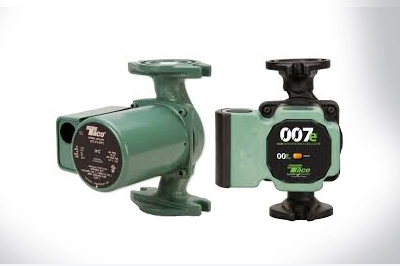How training, education and certification impact recruiting, loyalty, retention, operational excellence and profitability.
Through good economies and bad, there has been one single issue that has plagued the industry for years — a shortage of qualified service technicians.
For smaller contracting firms, losing an experienced technician and the time it takes to fill that void can be crippling. For the larger firms — or those looking to grow — service technicians are the lifeblood of the company, and meeting such a high demand for talent can be challenging.
But is the shortage fact or fiction?
Industry leaders have dozens of theories regarding the technician/talent shortage. What is not in dispute, however, is that attracting and recruiting service technicians is central to a contracting firm's success and growth.
North American Technician Excellence (NATE) and HVACR Business collaborated on a comprehensive research project to understand what critical factors impact a contractor's ability to attract, recruit and retain loyal service technicians.
The objective was to assess the industry's current attraction and recruitment techniques. Associated with that objective, the study sought to develop a better understanding the role training, education and certification plays in the recruiting process.
Where Do You Fit In?
To provide the most accurate picture of the industry as possible, the study sampled contracting firms of all sizes. Whether you're a small firm just starting out, a mid-size firm with steady growth or a large player in the industry, the results of this study will speak to you.
The contracting firms who participated in the study identify themselves as doing either strictly commercial and industrial work, or a mixture of residential and light commercial work. Of the revenue categories given, the mean range of the firms represented is $2 to $2.9 million.
More than 60 percent of respondents indicated their firm had been in operation for 20 years or more, followed closely (22 percent) by firms that have been in operation 10-20 years.
Respondents identify themselves as owner/partner, corporate management or operating management of their respective firms, 84 percent of whom indicated they were 50 years of age or older.
A surprising majority of company owners have either never been NATE certified themselves (61 percent) or are not currently certified (16 percent).
This is an important statistic because, as you'll see in the rest of the study, even if the majority of respondents themselves aren't NATE certified, they still realize the importance of NATE certification for their technicians and the value it holds for recruitment and retention.
 The Importance of a Plan
The Importance of a Plan
Understanding how to plan and develop a successful training and certification program is a major key to eliminate workforce shortages, according to the findings.
Not surprisingly, 79 percent of the respondents indicated the ability to attract and recruit technicians was extremely important. Yet, just 23 percent said they had a program in place that was effective.
This statistic alone illustrates why some contractors struggle to attract and recruit technicians. As with any aspect of running a business, knowing you have a problem isn't enough — you must develop a plan to address that problem if you're going to succeed.
Those contractors who do have a training and certification program in place to attract and recruit technicians indicated they had far fewer problems finding, maintaining and growing their workforce.
"In all of our advertisements for new hires, we stress the importance of continuing education and certifications such as NATE," says Bill Stueber, owner of Blue Ridge Heating and Cooling in Pine Beach, N.J. "We let prospects know we have weekly training meetings and manufacturer training twice a month. We've had applicants apply to us based on our commitment to continuing education."
Nearly one-third of contractors, like Stueber, believe having a strategy in place provides them with a competitive advantage and, consequently, they invest more in training, education and certification.
Only 10 percent of contractors don't have a strategy and do not plan on developing one, which means the remaining 63 percent of respondents either have inconsistent implementation of their strategy or are working to develop a plan.
Most contractors (86 percent) have decided the way to solve the technician shortage is, instead of hiring technicians, to hire based on candidate profile and then provide career development through training, education and certification.
"We publicize the fact that we offer our own in-house accredited courses and certifications along with NATE education and testing," says Theo Etzel, CEO of Conditioned Air in Naples, Fla. "These certifications also play a large role in the career paths of employees."
 Educate and Elevate
Educate and Elevate
Successful contractors invest in their business and the products they offer, but there's another area in which the great ones continue to invest — their people. Specifically, successful owners invest in training, educating and advancing the careers of their employees.
A majority of respondents (53 percent) indicated they spend more than $500 annually per technician to prepare them for success through training, education and certification — 23 percent spend $1,000 or more.
Respondents also said, when it comes to the cost of certification, the contracting firm is the primary investor, with 71 percent bearing the full responsibility for certification cost.
"We have found that too many individuals in our industry are sufficiently trained to some degree or another, but many are not educated and therefore lack transferrable knowledge that can be used in various disciplines in our trade," says Ray Isaac, president of Isaac Heating & Air Conditioning in Rochester, N.Y. "While our competition is tied up looking for that elusive 'qualified individual,' through our own in-house classes we are creating our own."
No one disagrees that training makes employees valuable. But, just how valuable? This is, perhaps, one of the best-kept secrets in the industry.
An overwhelming majority (74 percent) of respondents do not track financial and/or operating metrics to measure training, education and certification return on investment (ROI). Those who do, however, report a reduced number of callbacks for employees who have received additional training and education.
A properly trained staff contributes to more revenue per employee and a higher ROI on hard assets, such as equipment and trucks. It's not enough to offer one or two education classes for employees here and there — it needs to be perpetual and not simply something offered in the slow months.
Most firms (72 percent) agree that training, education and certification programs help them achieve operation excellence and can also help retain top talent (67 percent). Today's workforce is always looking toward advancement and if you can't help them get there, they'll gladly find an employer who will.
"We often get applicants from other firms that do not offer advancement through education," Etzel says. "We're all too happy to invest in their education to make them better employees and people."
Test and Certify
"Training and education are only part of the story," says Wade Mayfield, NATE chairman and president of Thermal Services Inc. in Omaha, Neb. "Certification is the most important of the three, since certification brings measured accomplishment to the technician which only makes a more confident employee."
Other organizational benefits respondents attributed to training, education and certification include:
- Positive contribution to branding and sales efforts in marketplace
- Fosters environment of continuous improvement
- Stronger customer relationships
Training and Certification isn't just something that benefits your company and your bottom line either — it's also something technicians desire when looking at job opportunities. The majority of respondents (61 percent) believe certified technicians have wider industry opportunities than uncertified technicians.
And, experienced technicians who aren't certified want an opportunity where they can grow as a professional and prove themselves.
"We do find that experienced technicians want to come work for us because we offer training and NATE certifications for them," Mayfield says.
Everyone likes to consider himself or herself a professional, and certification is how technicians differentiate themselves.
"Certifications for technicians akin to earning business degrees," Etzel says. "They can be a source of accomplishment and pride. They are tangible and travel with the individual wherever they end up. There's a value to us to have educated people and a value to the technician who has added to his or her credentials for the future."
Of course, there's another reason technicians seek out opportunities for certification — it's not just about bragging rights and portraying a professional image. Because certified technicians add more to a company's bottom line than non-certified technicians, contracting firm owners are willing to reward that increased ROI.
The average hourly wage for a NATE certified technician is $25.30 compared to $22.75 for a non-NATE certified technician — that's an 11.2 percent increase in salary! Well worth it when you consider the increased ROI a company earns with fewer callbacks.
The bottom line is both employees and employers must invest time and money into training and certifications, as both benefit from this investment.
Industry-wide, contractors support some kind of testing for certification and, while many prefer to have that testing done in-house (21 percent) or at a distributor's facility (28 percent), most (38 percent) have no preference where it's offered — as long as it's made available.
In fact, a majority (72 percent) support the availability of online testing at home for technicians, which shows the industry's flexibility and desire to embrace certification.
"I've often said that every professional needs a formalized validation and credentialing process for their career, and for us NATE has been that process," Isaac says. "Certification is the ultimate qualifier at Isaac, and not just in one specialty, but in every specialty in which the individual desires to quantify their accomplishments."
The 2014 Workforce Trends Survey was conducted by HVACR Business, in collaboration with North American Technician Excellence (NATE).
Complete Form to download a copy of
|
Workforce Trends Research
|
| |
|
|
|
|
|

|


 The Importance of a Plan
The Importance of a Plan Educate and Elevate
Educate and Elevate



